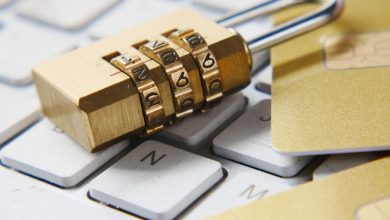How to Protect Your Crypto Wallet from Hackers

- Understanding the risks associated with crypto wallet hacking
- Best practices for securing your crypto wallet
- Choosing the right type of crypto wallet for enhanced security
- Common tactics used by hackers to target crypto wallets
- Setting up two-factor authentication for added protection
- Regularly updating your wallet software to prevent vulnerabilities
Understanding the risks associated with crypto wallet hacking
It is crucial to understand the risks associated with crypto wallet hacking in order to protect your investments. When hackers gain access to your wallet, they can steal your digital assets without leaving any trace. This can result in significant financial losses and can also damage your trust in the security of cryptocurrencies.
One of the main risks of crypto wallet hacking is that once the hackers have stolen your assets, it is nearly impossible to recover them. Cryptocurrency transactions are irreversible, meaning that once the funds are transferred out of your wallet, there is no way to reverse the transaction. This makes it essential to take preventive measures to secure your wallet.
Hackers use various techniques to gain access to crypto wallets, including phishing attacks, malware, and social engineering. Phishing attacks involve tricking users into providing their login credentials on fake websites, while malware can infect your device and steal sensitive information. Social engineering tactics involve manipulating individuals into revealing their private keys or other security information.
By understanding the risks associated with crypto wallet hacking, you can take proactive steps to protect your assets. This includes using secure wallets, enabling two-factor authentication, avoiding suspicious links and emails, and keeping your software up to date. Additionally, it is important to store your private keys offline and use hardware wallets for an extra layer of security.
Best practices for securing your crypto wallet
When it comes to securing your crypto wallet, there are several best practices you should follow to protect your assets from hackers. By taking these precautions, you can reduce the risk of unauthorized access to your funds.
- Use a hardware wallet: Hardware wallets are considered one of the most secure options for storing your cryptocurrency. These devices store your private keys offline, making it much harder for hackers to gain access to your funds.
- Enable two-factor authentication: Two-factor authentication adds an extra layer of security to your wallet by requiring a second form of verification, such as a code sent to your phone, in addition to your password.
- Regularly update your wallet software: Keeping your wallet software up to date is crucial for protecting it from known vulnerabilities. Developers often release updates to address security issues, so make sure to install them promptly.
- Backup your wallet: It’s important to regularly backup your wallet to ensure you can recover your funds in case your device is lost or damaged. Store your backups in a secure location, such as a safe or safety deposit box.
- Avoid public Wi-Fi: When accessing your wallet, avoid using public Wi-Fi networks, as they can be insecure and make it easier for hackers to intercept your data. Instead, use a secure and private network.
By following these best practices, you can significantly improve the security of your crypto wallet and reduce the risk of falling victim to hacking attempts. Remember that protecting your assets is essential in the world of cryptocurrency, where transactions are irreversible and anonymity is prized.
Choosing the right type of crypto wallet for enhanced security
When it comes to safeguarding your cryptocurrency wallet from potential hackers, choosing the right type of crypto wallet is crucial for enhancing security. There are several options available in the market, each with its own set of advantages and disadvantages.
One of the most secure options is a hardware wallet, which is a physical device that stores your private keys offline. This type of wallet is considered highly secure because it is not connected to the internet, making it less vulnerable to cyber attacks. However, hardware wallets can be more expensive compared to other types of wallets.
Another option is a paper wallet, which involves printing out your private keys and keeping them in a safe place. While paper wallets are secure from online hacks, they can be easily damaged or lost if not stored properly.
For those who prefer a more convenient option, a mobile or desktop wallet may be suitable. These wallets are software-based and can be accessed through your smartphone or computer. While they offer ease of use, they are more susceptible to online attacks compared to hardware or paper wallets.
Ultimately, the type of crypto wallet you choose will depend on your individual needs and preferences. It’s important to weigh the pros and cons of each option to determine which one offers the best balance of security and convenience for your cryptocurrency holdings. By selecting the right type of wallet, you can better protect your assets from potential threats and ensure peace of mind when it comes to managing your cryptocurrency investments.
Common tactics used by hackers to target crypto wallets
There are various tactics that hackers commonly use to target crypto wallets. One of the most prevalent methods is phishing, where hackers send emails or messages pretending to be from a legitimate source, such as a crypto exchange or wallet provider. These messages often contain links that, when clicked on, lead to fake websites that steal login credentials and private keys.
Another tactic used by hackers is malware, which can infect a user’s device and steal sensitive information, including wallet passwords and private keys. Malware can be downloaded unknowingly through malicious websites, email attachments, or software downloads.
Social engineering is another common tactic employed by hackers to target crypto wallets. This involves manipulating individuals into divulging their private information or granting access to their wallets through various means, such as impersonation, pretexting, or baiting.
Brute force attacks are also used by hackers to crack passwords and gain access to crypto wallets. In these attacks, hackers use automated tools to try different combinations of passwords until they find the correct one. This method can be time-consuming but is still effective in some cases.
Setting up two-factor authentication for added protection
To enhance the security of your crypto wallet, consider setting up two-factor authentication (2FA) for added protection. 2FA adds an extra layer of security by requiring not only a password and username but also something that only the user has on them, such as a piece of information only they would know or have access to.
Setting up 2FA is a straightforward process that can significantly reduce the risk of unauthorized access to your crypto assets. Follow these steps to set up 2FA for your crypto wallet:
- Go to your account settings or security settings in your crypto wallet application.
- Look for the option to enable two-factor authentication and click on it.
- Choose a 2FA method that works best for you, such as SMS authentication, Google Authenticator, or hardware tokens.
- Follow the on-screen instructions to complete the setup process.
- Once 2FA is set up, you will be prompted to enter a verification code every time you log in to your crypto wallet.
By setting up 2FA, you can significantly reduce the risk of falling victim to hackers and protect your crypto assets from unauthorized access. Take the necessary steps to secure your crypto wallet and enjoy peace of mind knowing that your investments are safe and secure.
Regularly updating your wallet software to prevent vulnerabilities
Regularly updating your wallet software is crucial in protecting your crypto assets from potential vulnerabilities. By staying up-to-date with the latest software versions, you can ensure that any security loopholes or weaknesses are patched promptly. This simple yet effective practice can significantly reduce the risk of hackers exploiting known vulnerabilities to gain unauthorized access to your crypto wallet.
Updating your wallet software is a proactive measure that can prevent potential security breaches before they even occur. Hackers are constantly evolving their tactics to target unsuspecting users, so it is essential to stay one step ahead by keeping your software updated. Additionally, software updates often come with enhanced security features that can further safeguard your wallet against cyber threats.
To make the updating process smoother, consider enabling automatic updates for your wallet software. This way, you can ensure that you are always running the latest version without having to manually check for updates regularly. However, it is still recommended to periodically verify that automatic updates are enabled and functioning correctly to avoid any unforeseen issues.
In conclusion, regularly updating your wallet software is a simple yet effective way to bolster the security of your crypto assets. By staying vigilant and proactive in keeping your software up-to-date, you can minimize the risk of falling victim to hackers and protect your investments in the ever-evolving world of cryptocurrency.



